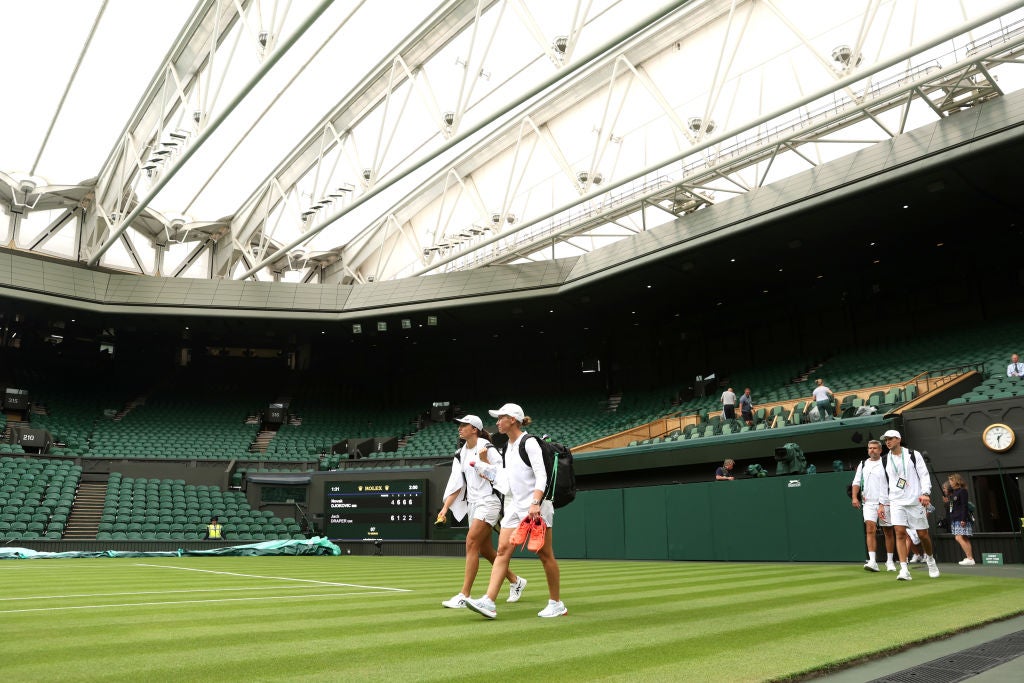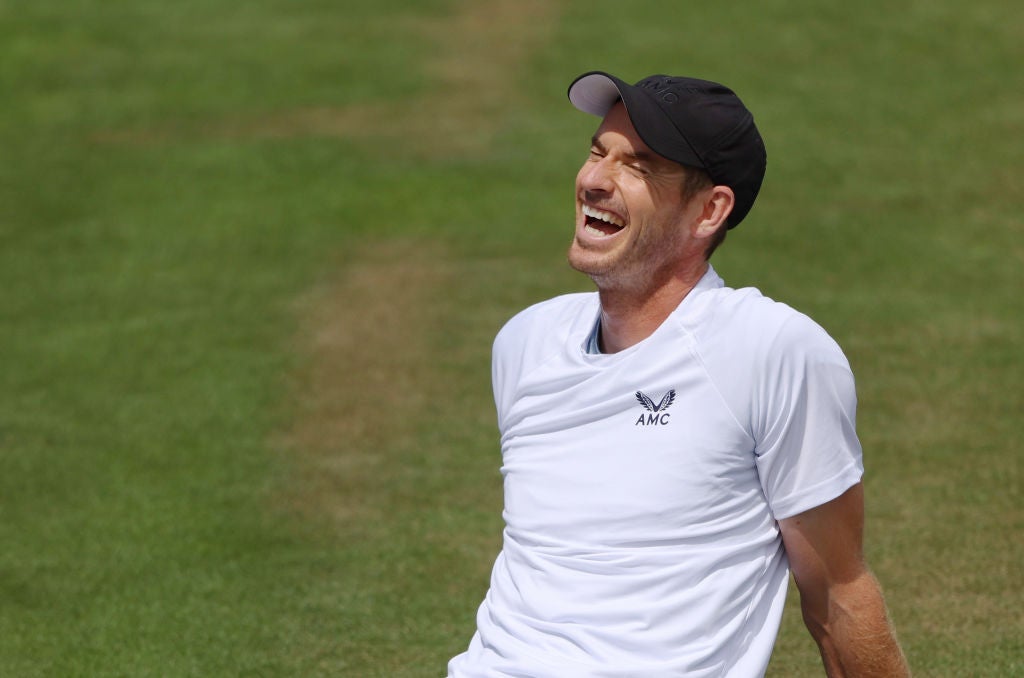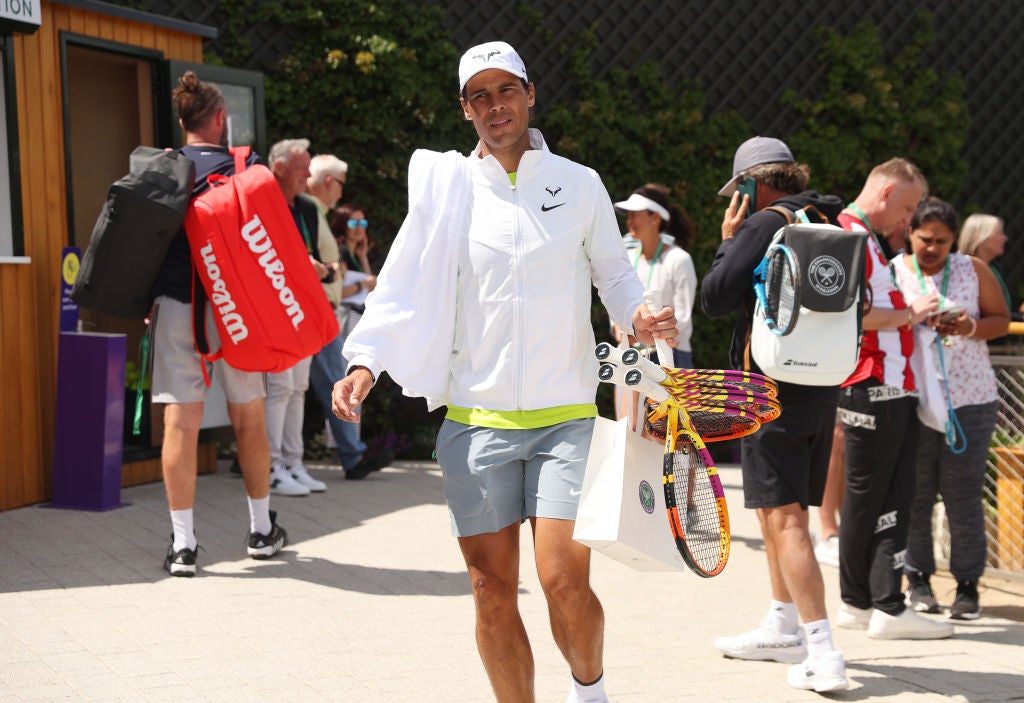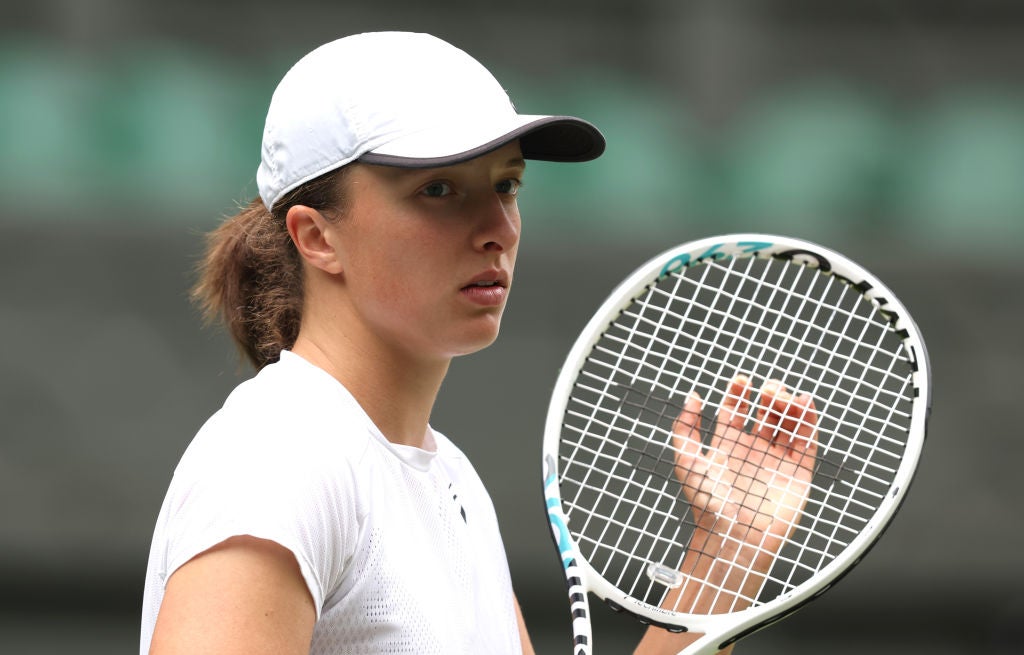Between controversy and change, Wimbledon set for a year like no other
Debate over the banning of Russian and Belarusian players and the discussion over tournament traditions will be left behind when a star-studded field takes to the court in SW19

It’s easy to get the sense that nothing ever changes at Wimbledon. From the pristine grass to the strawberries and cream, the two weeks it spends at the heart of the British summer are reassuringly familiar. With the Championships returning in full bloom this year now all Covid-19 restrictions have been lifted, Andy Murray said he was looking forward to the first “normal” Wimbledon since 2019, but in actuality the All England Club are braced for a tournament like no other.
For an event that prides itself so highly on its history and tradition, change has the potential to be a little jarring. As Centre Court celebrates its 100th year, it will do so on the first full day of play on “Middle Sunday” in the tournament’s history, with Wimbledon falling in line with the other grand slams by offering 14 days of continuous action. The end of “Middle Sunday”, a day which was previously reserved to allow the schedule to catch up in case it was delayed by rain, will also have an impact on “Manic Monday” – the previously frantic afternoon where all 16 men’s and women’s fourth-round matches were held.
When it comes to drama, tournament organisers at the All England Club will hope that, for them at least, most of it has already passed. Wimbledon found itself at odds with the professional tours and the rest of the grand slams in taking the decision to ban Russian and Belarusian players from the tournament, in response to the invasion of Ukraine and on the basis of UK government guidance. The tours reacted by stripping Wimbledon of its ranking points, a move that led to some players, including the British men’s No 1 Cameron Norrie, suggesting the Championships would be reduced to an “exhibition” event.

Despite those claims, the Championships have still drawn a full field from those available to participate. Still, it means players such as Novak Djokovic and last year’s runner-up Matteo Berrettini are set to plummet in the rankings as they are unable to defend the points from the previous summer. Wimbledon were put into a difficult position and most of the players on the ATP and WTA were able to understand both sides of the debate, and it appears no resolution is in sight. The ban on Russian and Belarusian players, which will see the men’s world No 1 Daniil Medvedev and the women’s No 6 Aryna Sabalenka unable to compete, will be indefinite until the UK government change their guidance. “I understand why the decision was taken.” Murray said ahead of the tournament. “I also know quite a few of the Russian and Bearlusian players and I feel bad for them. I can understand the frustration on their side.”
Wimbledon, though, is moving on and once the matches begin it will be hard to know where to look. The opening day of play on Centre Court will see both Murray and Emma Raducanu, the two top British stars, begin their campaigns in what is a dream scenario for tournament organisers.
It comes after both players appeared upbeat about their respective injury concerns heading into the tournament but behind them there is also hope that a pool of homegrown talent is beginning to come through. Harriet Dart and Jack Draper lead a strong contingent of Brits who have found form ahead of Wimbledon and the fact all 17 home players in the main draw avoided a seeded opponent in the first round adds to the hope that many of them can extend their stays in SW19.

There could be some shocks in store as new names emerge, but at the other end of the tournament there are few surprises when it comes to the tournament favourites. On one side there is Djokovic, the men’s top seed aiming for his fourth Wimbledon title in a row and seventh overall, and beside him the women’s World No 1 Iga Swiatek. The two-time French Open champion arrives in London on the back of a 35-match winning run.
Djokovic, to begin with, faces the challenge of restoring the indomitable aura that has crumbled slightly since he defeated Berrettini in last year’s final. Following his visa saga in Australia, Djokovic was beaten by his great rival Rafael Nadal at the French and is set to miss the US Open in August as he remains unvaccinated for Covid. This is his last chance to avoid the unthinkable notion of a season without a grand slam. “As of today I’m not allowed to enter the United States under these circumstances,” Djokovic admitted. ”I’m aware of that. That is an extra motivation to do well here.”
Djokovic finds himself on the kinder side of the men’s draw, with Nadal landing in the same section as Berrettini and Felix Auger-Aliassime. Nadal, somehow, is halfway to a calendar grand slam after his stunning victories at the Australian Open and French Open, where he ended Djokovic’s title defence. “Even though I’m one of his biggest rivals and we had incredible matches during our career, I have nothing but respect for him and what he has achieved,” Djokovic said.

Nadal will be making his first appearance at Wimbledon since 2019 and his last stand adds another intriguing element to the fortnight. The treatment Nadal has undergone on his chronic foot problem has left the 36-year-old sounding much more positive, both on the court and day to day. “First of all, I can walk normally most of the days. When I wake up, I don’t have this pain that I was having for the last year and a half,” Nadal said, in a frank admission and reminder of what he overcame in winning the first two grand slam titles of the season.
“It’s just really inspirationally. Only Rafa could do it,” Swiatek noted, and yet the 21-year-old’s achievements over the past several weeks should draw just as much adulation. Swiatek remains a hesitant tournament favourite, however. Although she was a junior champion here in 2018, the Polish star believes she is still adjusting to grass and has not set herself any expectations on reaching another final.
The prospect of another clash with Coco Gauff, the defeated finalist at the French Open earlier this month, is brilliant for the game. Both players have shown incredible maturity and openness when discussing mental health, while the 18-year-old Gauff produced a remarkably assured response when asked about the Roe v Wade decision in the Supreme Court. ”I feel like I use that almost as fuel to do better,” Gauff said, as she vowed to continue using her platform to highlight social issues.

Gauff and Swiatek are both the future and present of tennis, and so it goes that we have a Wimbledon which balances the new with the old, between innovation and tradition. Nadal appeared perplexed when it was put to him that this would be the first Wimbledon since 1998 without the presence of Roger Federer, and so it is down to Serena Williams to carry on the legacy that bridges generations. The 40-year-old is returning to the Championships after a year-long injury absence, and she still believes she can win.
“It feels good to be back at Wimbledon,” she smiled on Saturday. “A little surreal sitting here again. It’s like, ‘Didn’t I just do this?’”
It goes to show, at times it feels like there has been no change at all.






Join our commenting forum
Join thought-provoking conversations, follow other Independent readers and see their replies
Comments